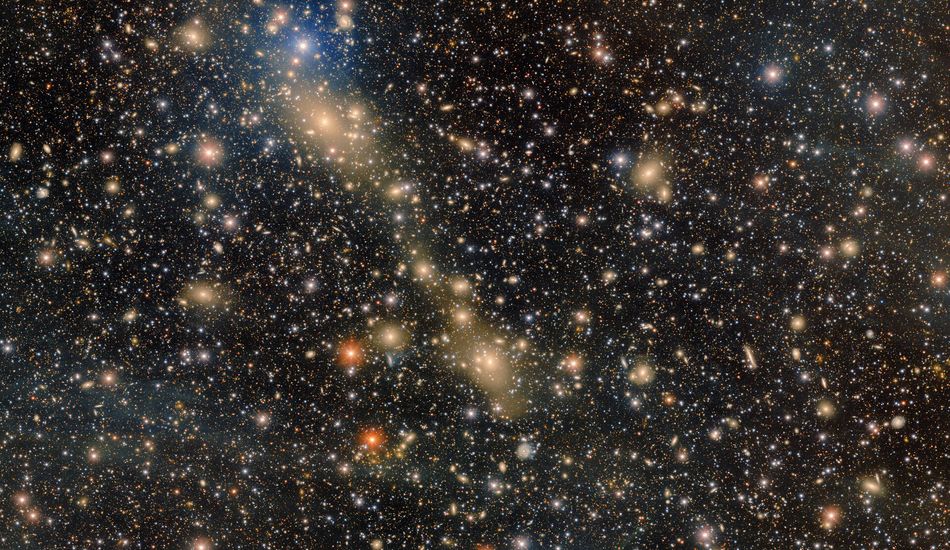
New Image of Galaxy Cluster Shows Cosmic Insignificance
Hey space enthusiasts! Have you ever felt incredibly small? Well, a new image of a massive galaxy cluster called Abell 3667, located a staggering 700 million light-years away, will probably do the trick. I mean, the sheer scale of the universe is just mind-boggling.
This isn't just any snapshot; it's the deepest image ever taken of this cluster. Each tiny dot you see? Probably an entire galaxy. It's like looking at a cosmic family reunion, but instead of awkward small talk, you have gravitational forces at play. However, it's not just about the size of the cluster; it's also about what this image reveals about its past.
What's particularly fascinating is that astronomers have found "whispering evidence" of past galactic interactions within Abell 3667. Imagine two galaxies merging, creating a bridge of stars that stretches across the cluster. This stellar union causes gravitational bursts that can actually pull stars away from other galaxies. These "lone wolf" stars then emit a faint glow, which astronomers call intracluster light (ICL).
ICL is the key to understanding Abell 3667's history. It seems likely that this cluster formed from a rapid merger of two galaxy clusters. Previous observations hinted at this, but this new image provides the first optical evidence. Anthony Englert, the lead author of the study, said it was a "huge surprise" to be able to image such a faint feature.
The team was able to capture this detailed image because they had a long observation period and they combined many images taken over the years. I think that's great, as the result shows faint, wispy puffs of cosmic dust called integrated flux nebulae, which appear as bluish ribbons of light.
What's Next?
So, what's next for the study of Abell 3667 and intracluster light? Well, the Rubin Telescope is now up and running, and it's poised to revolutionize this field. Rubin will be able to image ICL for every single local galaxy cluster in the southern sky. According to Englert, what they've done is just a "small sliver" of what Rubin will be able to do. This means that we can expect to see even more detailed images of Abell 3667 and other galaxy clusters in the future.
If this image doesn't make you feel small, just wait. As we continue to explore the universe with more powerful telescopes, our understanding of our place in the cosmos will continue to evolve. For better or worse, we humans will only get smaller from here.
Source: Gizmodo